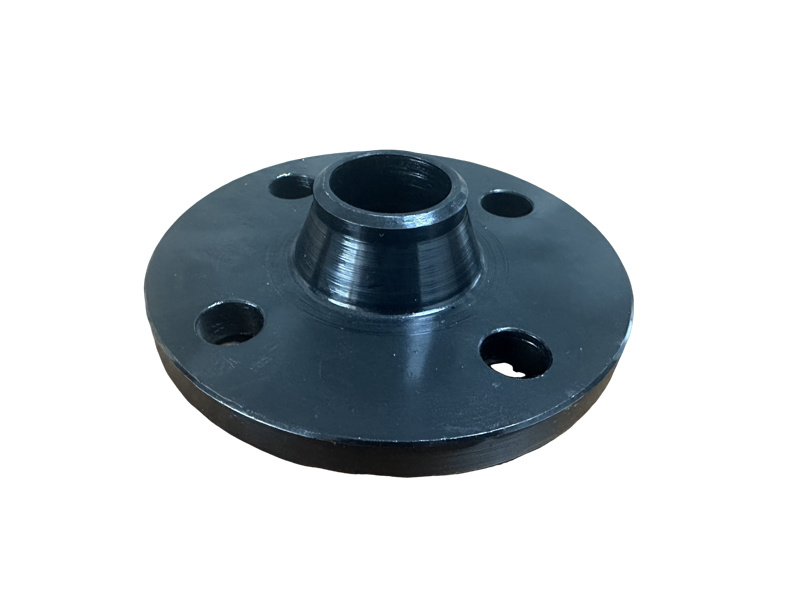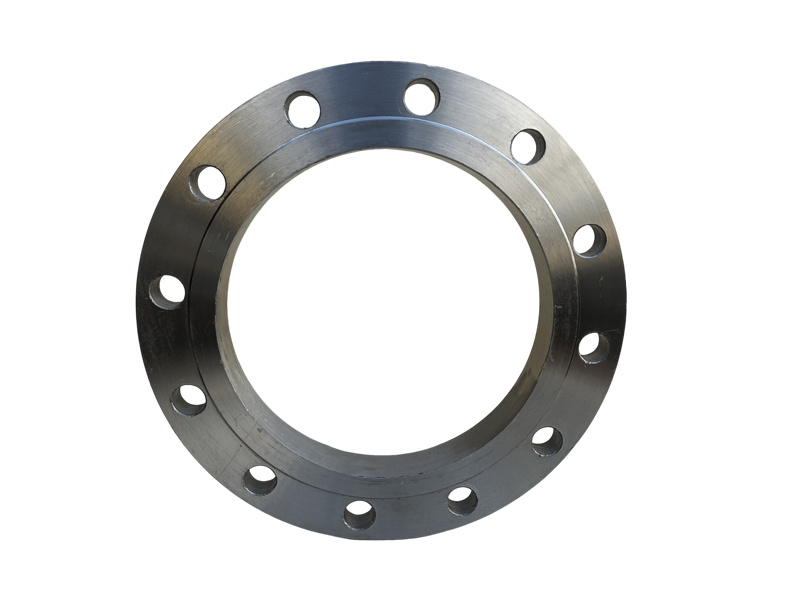-
How to Select the Right BS4504 PN16 Weld Neck Flange for Your Needs
Date:
16 Jul,2025
How to Select the Right BS4504 PN16 Weld Neck Flange for Your Needs Table of Contents Introduction to BS4504 PN16 Weld Neck Flanges Understanding Flanges: Types and Functions Overview of the BS4504 Standard The Importance of PN16 in Flange Selection How to Choose the Right BS4504 PN16 Weld Neck Flange Material Considerations Size and Dimensions
How to Select the Right BS4504 PN16 Weld Neck Flange for Your Needs
Table of Contents
- Introduction to BS4504 PN16 Weld Neck Flanges
- Understanding Flanges: Types and Functions
- Overview of the BS4504 Standard
- The Importance of PN16 in Flange Selection
- How to Choose the Right BS4504 PN16 Weld Neck Flange
- Material Considerations
- Size and Dimensions
- Pressure Rating and Temperature Considerations
- Welding Requirements
- Common Applications for BS4504 PN16 Weld Neck Flanges
- Maintenance Tips for Weld Neck Flanges
- Conclusion
- Frequently Asked Questions
Introduction to BS4504 PN16 Weld Neck Flanges
When it comes to industrial piping systems, the selection of the right flange is crucial for ensuring both performance and safety. **BS4504 PN16 weld neck flanges** are among the most commonly used types due to their robust design and versatility. In this guide, we will explore the factors that contribute to selecting the right BS4504 PN16 weld neck flange for your needs, including material, size, and application considerations.
Understanding Flanges: Types and Functions
Flanges serve as critical components in piping systems, facilitating connections between pipes, valves, and other equipment. Understanding the various types of flanges and their functions is essential for making an informed selection.
Types of Flanges
- **Weld Neck Flanges**: These flanges have a long neck, which helps to distribute stress and provides a strong connection to pipes.
- **Slip-On Flanges**: Designed to slip over the pipe, these flanges are easier to align but offer less strength.
- **Blind Flanges**: Used to seal off the end of a pipeline, these flanges do not have a hole for a pipe.
- **Socket Weld Flanges**: These flanges are designed for small-diameter pipes and are welded from the inside.
Each type of flange has its unique applications, but **weld neck flanges** stand out for their strength and resistance to pressure fluctuations.
Overview of the BS4504 Standard
The **British Standard 4504 (BS4504)** specifies the dimensions, tolerances, and materials for flanges, ensuring uniformity and interoperability in piping systems. Understanding this standard is vital for selecting the correct flange that meets industry requirements.
Key Features of BS4504
- **Material Specifications**: The standard outlines acceptable materials for manufacturing flanges, including carbon steel, stainless steel, and alloys.
- **Dimensional Standards**: BS4504 provides detailed dimensions for different flange sizes, ensuring compatibility with other piping components.
- **Pressure Classes**: The PN rating (Nominal Pressure) indicates the maximum pressure that the flange can withstand at a specific temperature.
The Importance of PN16 in Flange Selection
The **PN16** designation indicates that the flange can handle a maximum pressure of 16 bar (approximately 232 psi) at a temperature of 20°C. This rating is crucial for ensuring that the flange will perform safely under expected operating conditions.
Why Choose PN16 Flanges?
- **Higher Pressure Handling**: PN16 flanges are suitable for high-pressure applications, making them ideal for various industrial processes.
- **Versatility**: They are often used in water supply systems, chemical processing, and oil and gas applications due to their robust performance characteristics.
- **Safety Assurance**: By adhering to the PN16 rating, users can ensure that their piping systems are capable of handling pressure fluctuations without failure.
How to Choose the Right BS4504 PN16 Weld Neck Flange
Selecting the right BS4504 PN16 weld neck flange involves several critical considerations that ensure optimal performance and safety.
Material Considerations
The material of the flange is one of the most important factors in its selection. Common materials include:
- **Carbon Steel**: Ideal for general applications where corrosion resistance is not a primary concern.
- **Stainless Steel**: Offers superior corrosion resistance and is suitable for harsh environments.
- **Alloy Steel**: Utilized in high-temperature and high-pressure applications.
Choosing the right material depends on the specific environment in which the flange will be used, including temperature, pressure, and exposure to chemicals.
Size and Dimensions
Flanges come in various sizes, and selecting the correct dimensions is essential for ensuring a proper fit within the piping system. The key aspects to consider include:
- **Pipe Diameter**: Match the flange size to the diameter of the pipe it will be connected to.
- **Bolt Circle Diameter**: Ensure that the bolt hole dimensions align with the corresponding pipe flanges.
- **Thickness**: The thickness of the flange should correspond to the pressure rating and application requirements.
Utilizing accurate dimensions ensures the integrity of the piping system and minimizes the risk of leaks.
Pressure Rating and Temperature Considerations
Understanding the pressure rating and temperature limits of your chosen flange is vital. The PN16 rating indicates the flange's capability to handle pressure, but it's also essential to consider the operating temperature:
- **Operating Temperature**: Ensure that the flange material can withstand the temperature of the fluids being transported.
- **Thermal Expansion**: Consider how temperature fluctuations may affect the materials and connections over time.
Always consult manufacturer specifications to ensure compliance with operational parameters.
Welding Requirements
Weld neck flanges require specific welding techniques to ensure a strong and leak-proof connection. Key aspects to consider include:
- **Welding Process**: Choose a welding method compatible with your flange material, such as TIG or MIG welding.
- **Welding Qualifications**: Ensure that welding personnel are qualified and equipped to perform the necessary welds according to industry standards.
- **Inspection Procedures**: Implement thorough inspection protocols post-welding to verify the integrity of the connections.
By following proper welding practices, you can enhance the overall reliability of your piping system.
Common Applications for BS4504 PN16 Weld Neck Flanges
BS4504 PN16 weld neck flanges are versatile and employed in numerous industries and applications, including:
- **Water Supply Systems**: Used in municipal and industrial water systems to connect pipes securely.
- **Chemical Processing**: Ideal for transporting corrosive substances where material integrity is critical.
- **Oil and Gas**: Employed in pipelines for oil and natural gas transport, providing a robust connection under high pressure.
- **Power Generation**: Utilized in steam and cooling water systems within power plants, maintaining system reliability.
Understanding the specific applications can assist in making a well-informed flange selection that meets your needs.
Maintenance Tips for Weld Neck Flanges
Proper maintenance of BS4504 PN16 weld neck flanges is essential to prolong their lifespan and ensure optimal performance. Consider the following tips:
- **Regular Inspections**: Periodically check for signs of wear, corrosion, or leakage.
- **Cleaning**: Keep flanges clean from debris and contaminants that could affect their integrity.
- **Torque Checks**: Regularly verify bolt torque to ensure proper sealing and connection security.
- **Replacement**: Be proactive about replacing flanges that show signs of significant wear or damage.
Implementing a robust maintenance schedule can help prevent costly repairs and enhance system reliability.
Conclusion
Choosing the right **BS4504 PN16 weld neck flange** is a critical decision that impacts the efficiency and safety of your piping systems. By considering factors such as material, size, pressure rating, and application, you can make an informed choice that meets your operational needs. Regular maintenance and adherence to industry standards further enhance the longevity and reliability of your flanges. Ultimately, this comprehensive approach will help you achieve superior fluid transport and processing in your projects.
Frequently Asked Questions
1. What is the primary advantage of using weld neck flanges?
The primary advantage of weld neck flanges is their ability to withstand high pressure and temperature variations due to their robust design.
2. Can I use a BS4504 PN16 flange in a lower pressure application?
Yes, while PN16 flanges are suitable for high-pressure applications, they can also be used in lower-pressure systems without issue.
3. How do I determine the correct size for my flange?
The correct size can be determined by matching the flange to the diameter of the pipe and ensuring bolt hole alignment.
4. What materials are most commonly used for BS4504 PN16 flanges?
Common materials include carbon steel, stainless steel, and alloy steel, each selected based on the specific application requirements.
5. What maintenance practices should I follow for my weld neck flanges?
Regular inspections, cleaning, torque checks, and timely replacement of worn flanges are recommended maintenance practices.Related News
17 Jul,2025
Understanding DIN Weld Neck Flange PN40: A Comprehensive Guide for Construction Professionals
In the realm of construction and decorative materials, the DIN weld neck flange PN40 plays a crucial role, especially in piping systems that require robust and reliable connections. Understanding its features, applications, and specifications is vital for professionals in the industry. The DIN weld neck flange is designed to provide a strong, fixed connection between pipes and components. Its dist
16 Jul,2025
How to Select the Right BS4504 PN16 Weld Neck Flange for Your Needs
How to Select the Right BS4504 PN16 Weld Neck Flange for Your Needs Table of Contents Introduction to BS4504 PN16 Weld Neck Flanges Understanding Flanges: Types and Functions Overview of the BS4504 Standard The Importance of PN16 in Flange Selection How to Choose the Right BS4504 PN16 Weld Neck Flange Material Considerations Size and Dimensions
15 Jul,2025
Understanding GOST 12820-80 Plate Flanges: Key Insights for Industry Professionals
GOST 12820-80 refers to a specific standard for plate flanges that originated in the Soviet Union and is still relevant in various engineering and construction applications today. Understanding this standard is crucial for professionals working in the building and decorative materials industry, especially in the domain of piping systems and fittings. The GOST 12820-80 standard specifies the dimens
Contact information
Address: North Ring Industrial Zone, Mengcun County
Telephone: 86 0317- 6729218 86 0317-6727320
Fax: 0317-6727310
mobile phone: 86 13833761688whatsapp: 86-13780271039
Email: shengyuanflange@163.comLeave Message









